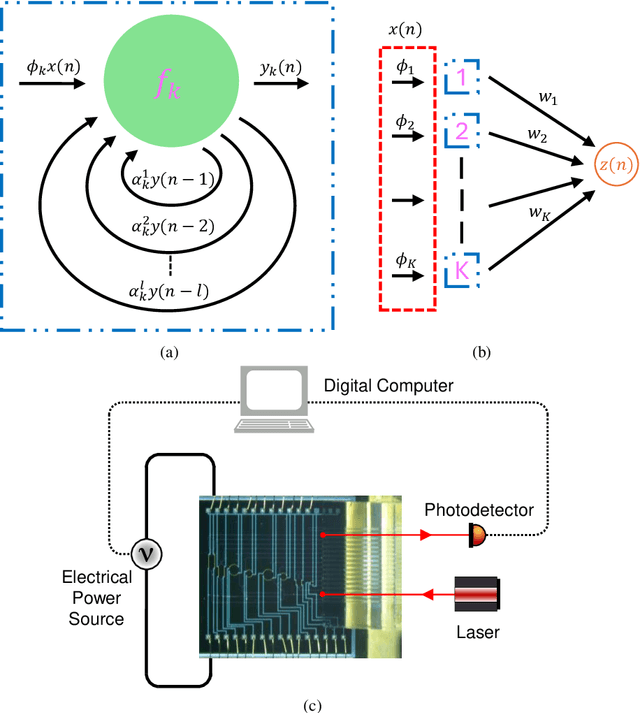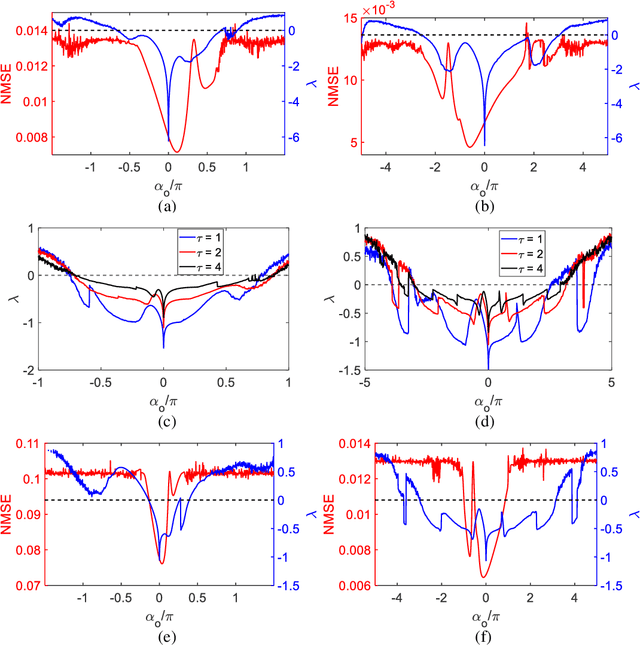Prabhav Gaur
Information Processing in Hybrid Photonic Electrical Reservoir Computing
Apr 01, 2024



Abstract:Physical Reservoir Computing (PRC) is a recently developed variant of Neuromorphic Computing, where a pertinent physical system effectively projects information encoded in the input signal into a higher-dimensional space. While various physical hardware has demonstrated promising results for Reservoir Computing (RC), systems allowing tunability of their dynamical regimes have not received much attention regarding how to optimize relevant system parameters. In this work we employ hybrid photonic-electronic (HPE) system offering both parallelism inherent to light propagation, and electronic memory and programmable feedback allowing to induce nonlinear dynamics and tunable encoding of the photonic signal to realize HPE-RC. Specifically, we experimentally and theoretically analyze performance of integrated silicon photonic on-chip Mach-Zehnder interferometer and ring resonators with heaters acting as programmable phase modulators, controlled by detector and the feedback unit capable of realizing complex temporal dynamics of the photonic signal. Furthermore, we present an algorithm capable of predicting optimal parameters for RC by analyzing the corresponding Lyapunov exponent of the output signal and mutual information of reservoir nodes. By implementing the derived optimal parameters, we demonstrate that the corresponding resulting error of RC can be lowered by several orders of magnitude compared to a reservoir operating with randomly chosen set of parameters.
Multirate Spectral Domain Optical Coherence Tomography
Feb 28, 2023Abstract:Optical coherence tomography is state-of-the-art in non-invasive imaging of biological structures. Spectral Domain Optical Co-herence Tomography is the popularly used variation of this technique, but its performance is limited by the bandwidth and res-olution of the system. In this work, we theoretically formulate the use of phase modulators and delay lines to act as filters on the tomography system and scan multiple channels. Various channels are then combined in a digital computer using filter bank theory to improve the sampling rate . The combination of multiple channels allows for increasing the axial resolution and maximum unambiguous range beyond the Nyquist limit. We then simulate the multirate spectral domain optical coherence tomography with 2 channels. We show that a single delay line can improve the axial resolution while a pair of phase modulators can improve the maximum unambiguous range of the system. We also show the use of multirate filter banks to carry out this process. Thus, by using a few extra components in the spectral domain optical coherence tomography, its performance can be increased manifold de-pending on the number of channels used. The extra cost is the time taken to perform the extra scans that is trivial for stationary objects like biological tissues.
 Add to Chrome
Add to Chrome Add to Firefox
Add to Firefox Add to Edge
Add to Edge